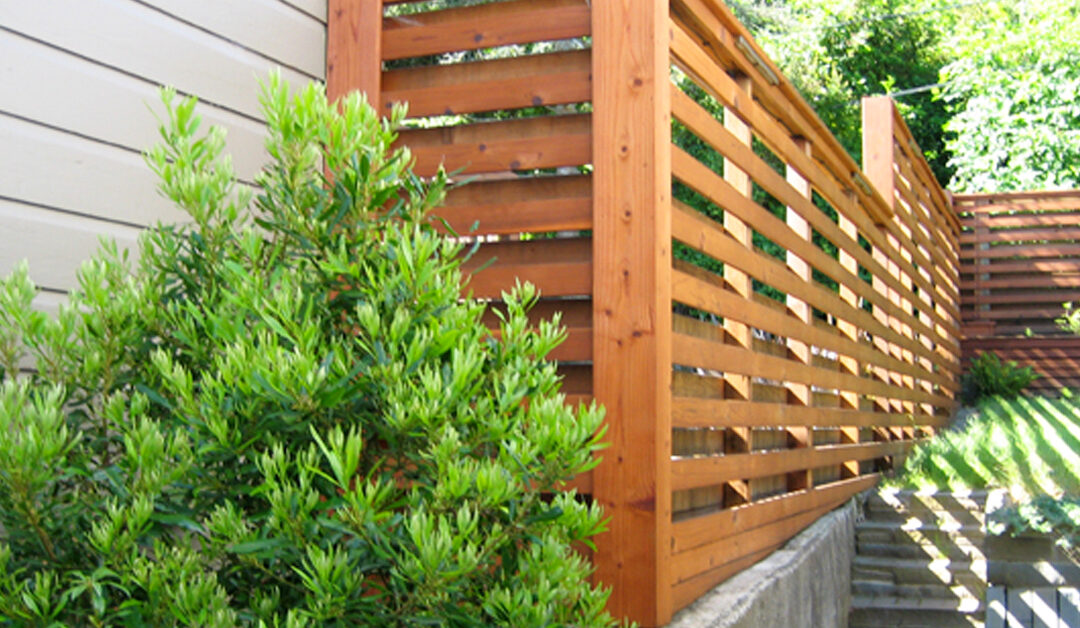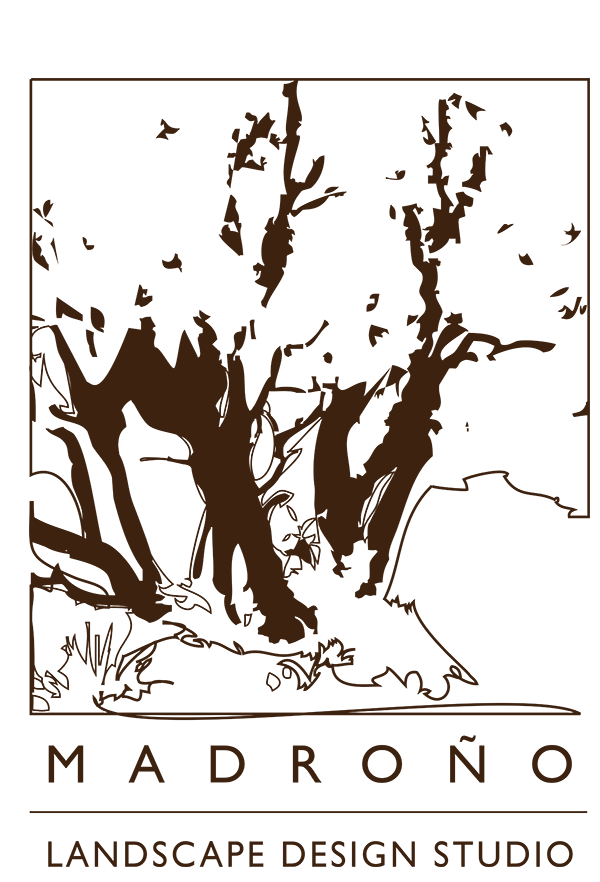Urban living means density, and for city back yards that means fencing: we need clean lines of agreement on where my property ends and yours begins.
But so many existing fences in the city are ugly, common, built on the cheap, installed by rote with no insight, like mere place-holders. We swoon at the magnitude of lost opportunities. If well designed, the fence can strive for art even as it performs its necessary, divisive duties. The key to the sublime lies in transparency to sunlight.
At this San Francisco residence, we wanted to maximize the sun in a small back yard of 25′ x 40′ with southern exposure on a northeast-facing slope. From the back window of the house, one sees the soft morning sun crossing the yard at a low angle from the left, and the strong rays of the deepening afternoon follow a decreasing angle from the right. A non-transparent fence would block all those desirable hours of low sun.
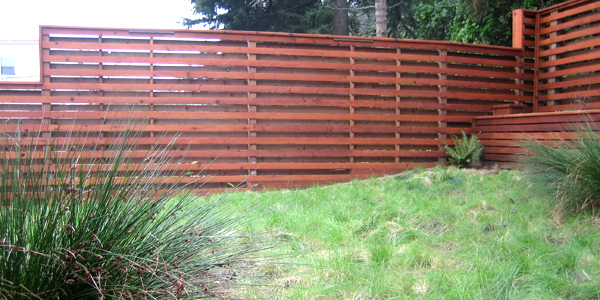
The fence looks mostly opaque when viewed from straight on, but sunlight descending at an angle can pass through (see photos above). We lay the horizontal 1×4 redwood slats on alternating sides of the posts, with a gap equal to the width of the slat, thus to provide the maximum transmission of angled sunlight while blocking out the straight-ahead view.
A beveled cap sitting proud 1″ on both sides gives the fence a more finished appearance, and is fitted on the inside edge with low-voltage rail lights for a lovely accent of illumination in the evenings. All surface lumber was treated with Armstrong’s transparent redwood stain, to protect the wood from the weather and to bring out its natural color and luster.
Depending of the proximity of neighbors (or lack thereof), some fences may take further steps toward visual transparency. Consider this split-rail grapestake fence (pictured left) on a private property in Marin, where the lot sizes are more generous and the neighbors are few. Relieved of the pressure to block the view, this fence delivers a wonderful “peekaboo” effect, teasing the eye with a glimpse of the colors and textures next door. The grapestake slats are installed on alternating sides of the rail, with a gap equal to twice the width of the slat. Such are the allowances we can make for the view when privacy is not a concern.
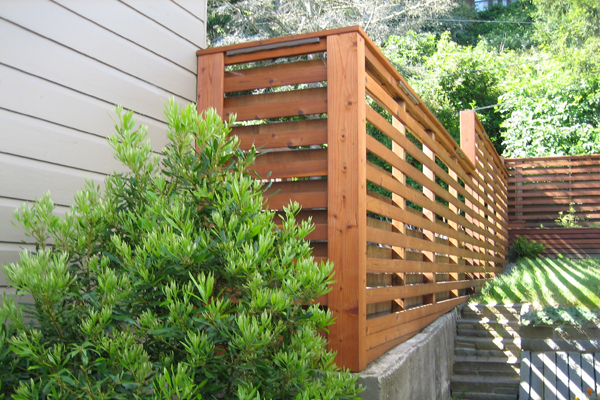

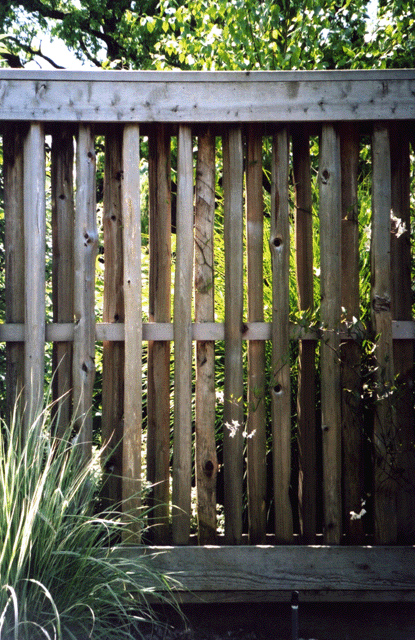
Another benefit of the alternating slat: both sides of the fence will have an attractive face. Compare this to most standard fences, which are built with all the slats on one side (usually on the side of the guy who paid for the fence), and the neighbors are left to look at all the ugly pressure-treated posts and rails, and the back side of the slats, which are often left untreated and unpainted on that side, thus weathering badly over time. What a pity that so many landscapers continue to follow this same misguided pattern. Nobody should be asked to look at the exposed framing of a cheap and badly designed fence.
Good fences don’t make good neighbors, but they can deliver a sense of harmony to the politics of the property line, even while serving in their own right as light-filled objects of subtle grace and beauty in the garden.

Madroño president Geoffrey Coffey started the company in 2005 out of the back of a pickup truck. His garden column, “Locals Only”, first appeared in the San Francisco Chronicle in 2002. He lives in San Francisco with his wife and two children, where he also sings and thumps the bass for Rare Device.

